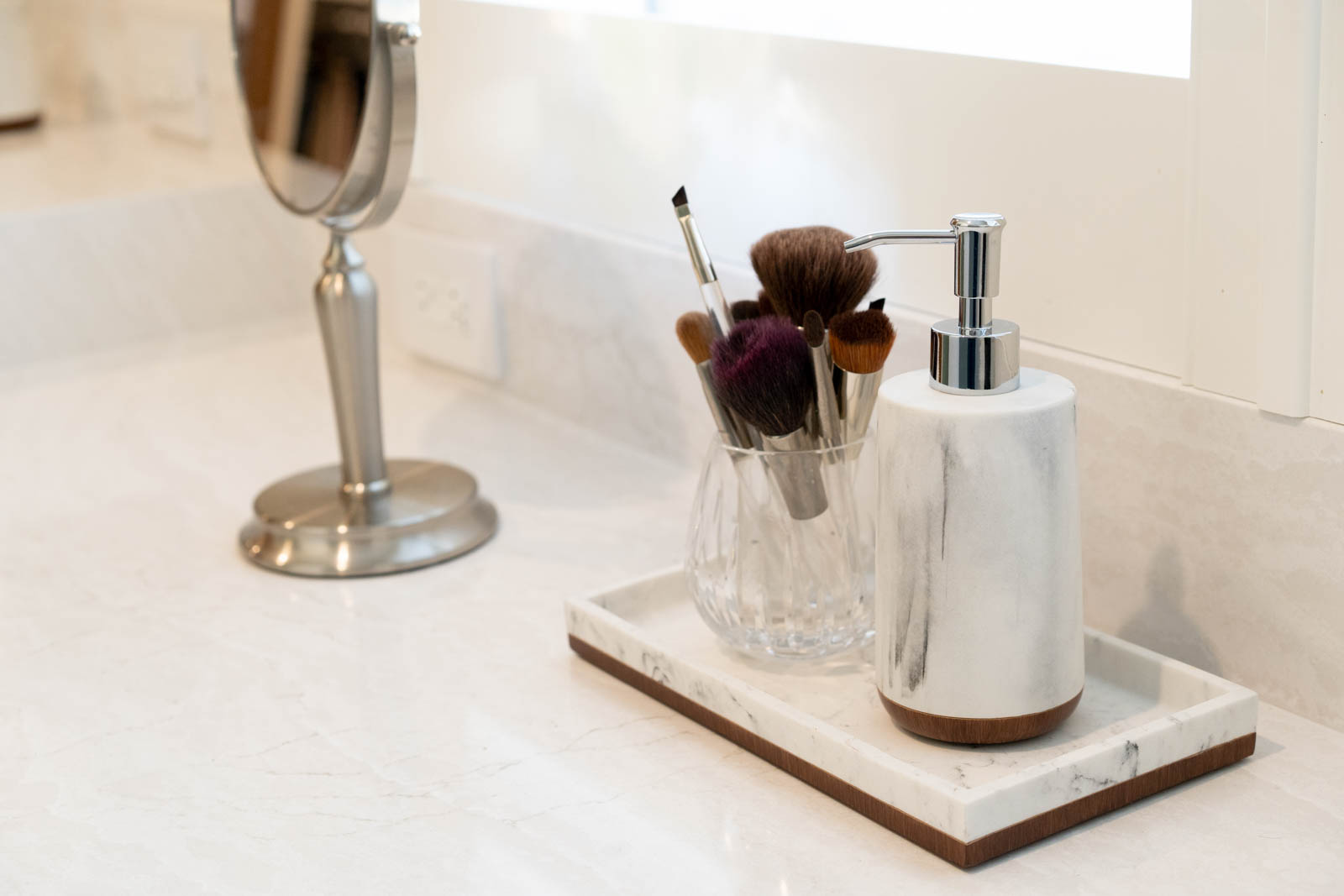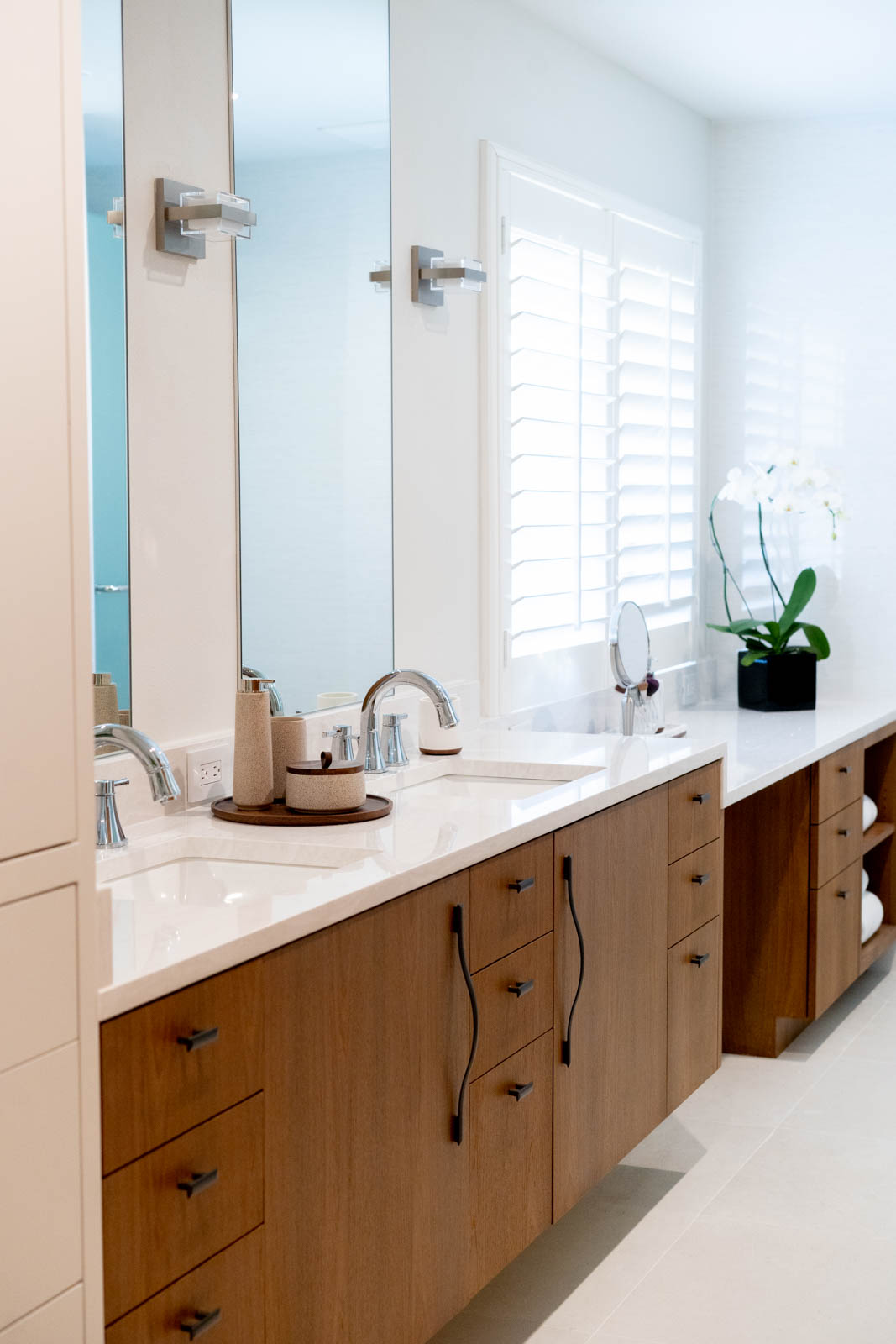Quartz Countertop Vocabulary
If you’re not an experienced interior designer, talking about bathroom or kitchen countertops can be like speaking a foreign language. Veining, movement, porosity… what does it all mean? This is my cheat-sheet to understanding the professional lingo when choosing a stone countertop.
Edge Profile – The shape of the edge of the countertop. There are many different edge styles to choose from, like flat, bullnose, beveled, and quarter-round.
Engineered Stone – Countertops that are man-made from combining quartz with binders. These countertops look like natural stone but allow the manufacturers to have more control over what the finished product looks like. Engineered stone is more consistent than natural stone because it is manufactured instead of mined.
Fading – When a stone loses color after being exposed to sunlight.
Movement – A unique pattern that flows through a slab. Movement is the opposite of uniformity or consistency.
Non-Porous – A surface that does not have holes in it, so it does not absorb air and moisture. Non-porous surfaces are ideal for countertops because they do not need to be sealed. Most engineered stones are non-porous.
Porous – A surface that has microscopic holes in it, allowing it to absorb air and moisture. Most natural stones are porous and if it is being used for a countertop, it must be sealed.
Sealing – The process of putting a clear coat on top of the stone to protect it from stains. Sealing is especially useful for porous stones.
Slab – A large, flat piece of stone. Stone countertops are made from slabs of either natural or engineered stone.
Veining – Long, thin strips of contrasting color in a countertop slab. Depending on how a slab is cut — either with the vein or across it — the veining can appear swirled and cloudy, or distinct and linear.

This faint veining in this engineered stone picks up on the softwood tones from the custom cabinets. Design by Schlosser Design group.
Watch Behind The Scenes
In the second video of my four-part series SDG Renovation, I take you behind the scenes as I select an engineered quartz countertop for my clients. To learn more about the project I’m selecting countertops for, go back and watch Episode One.

In my video, you’ll see how I selected this beautiful engineered stone for my client’s master bathroom. Design by Schlosser Design Group.


















